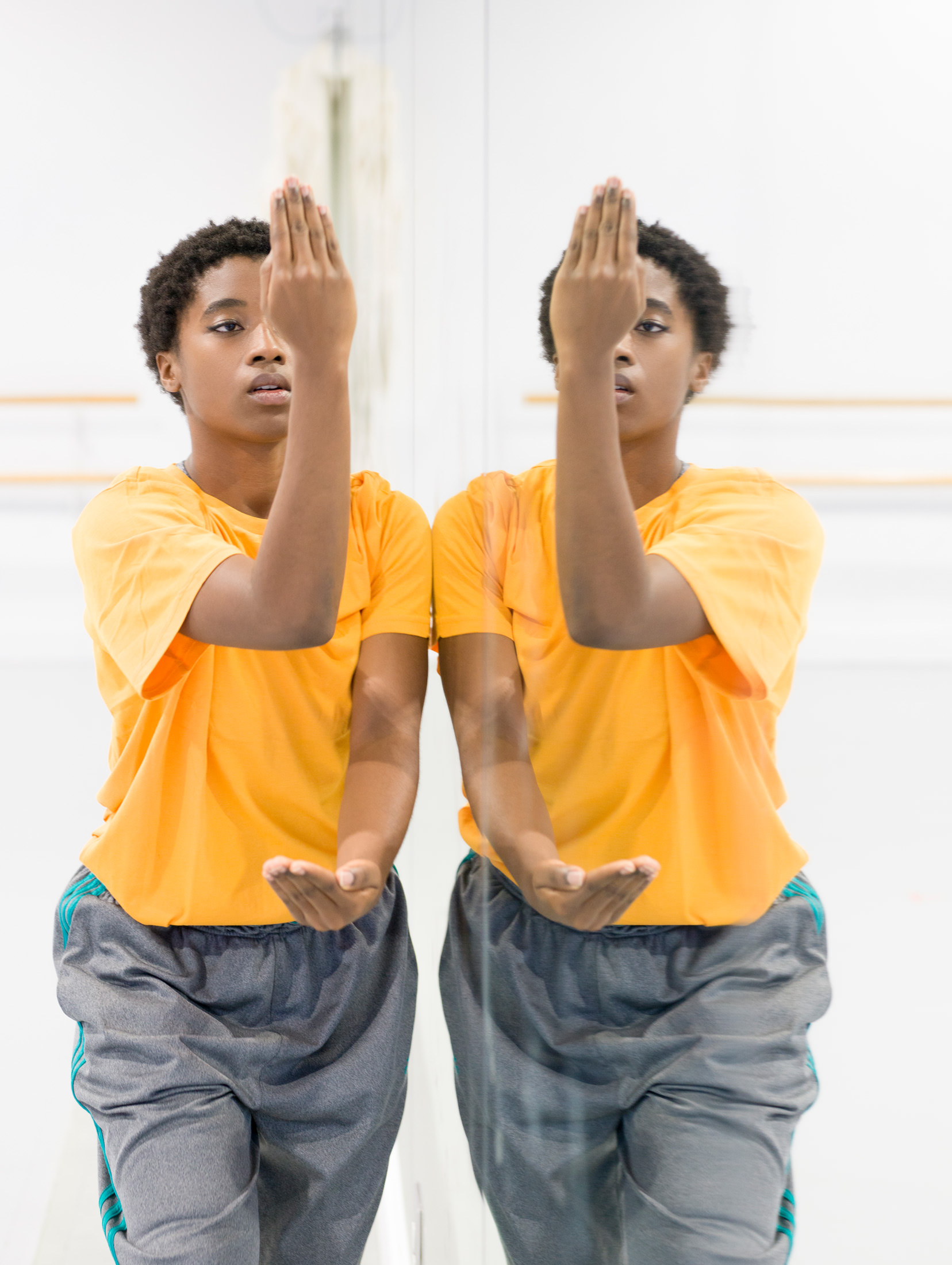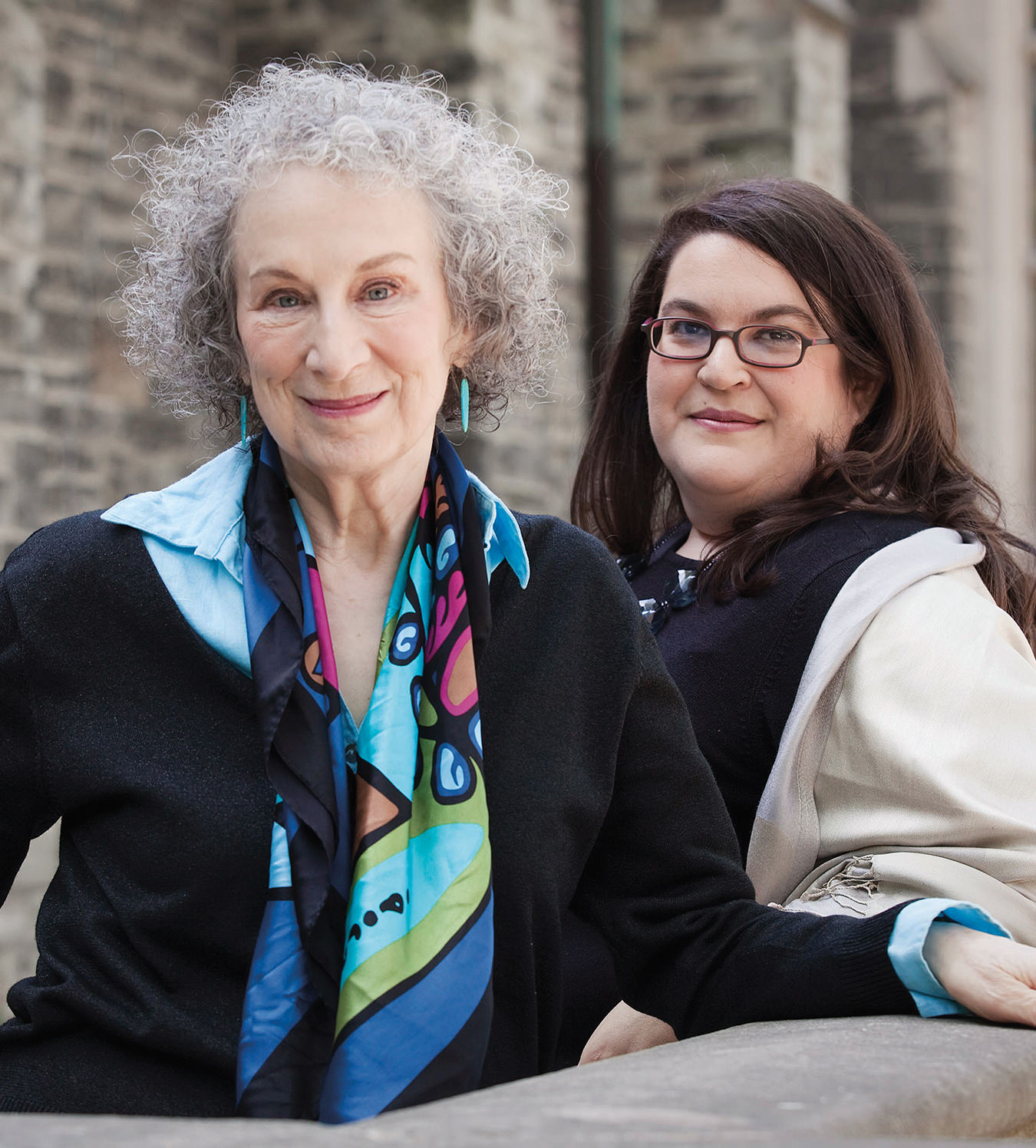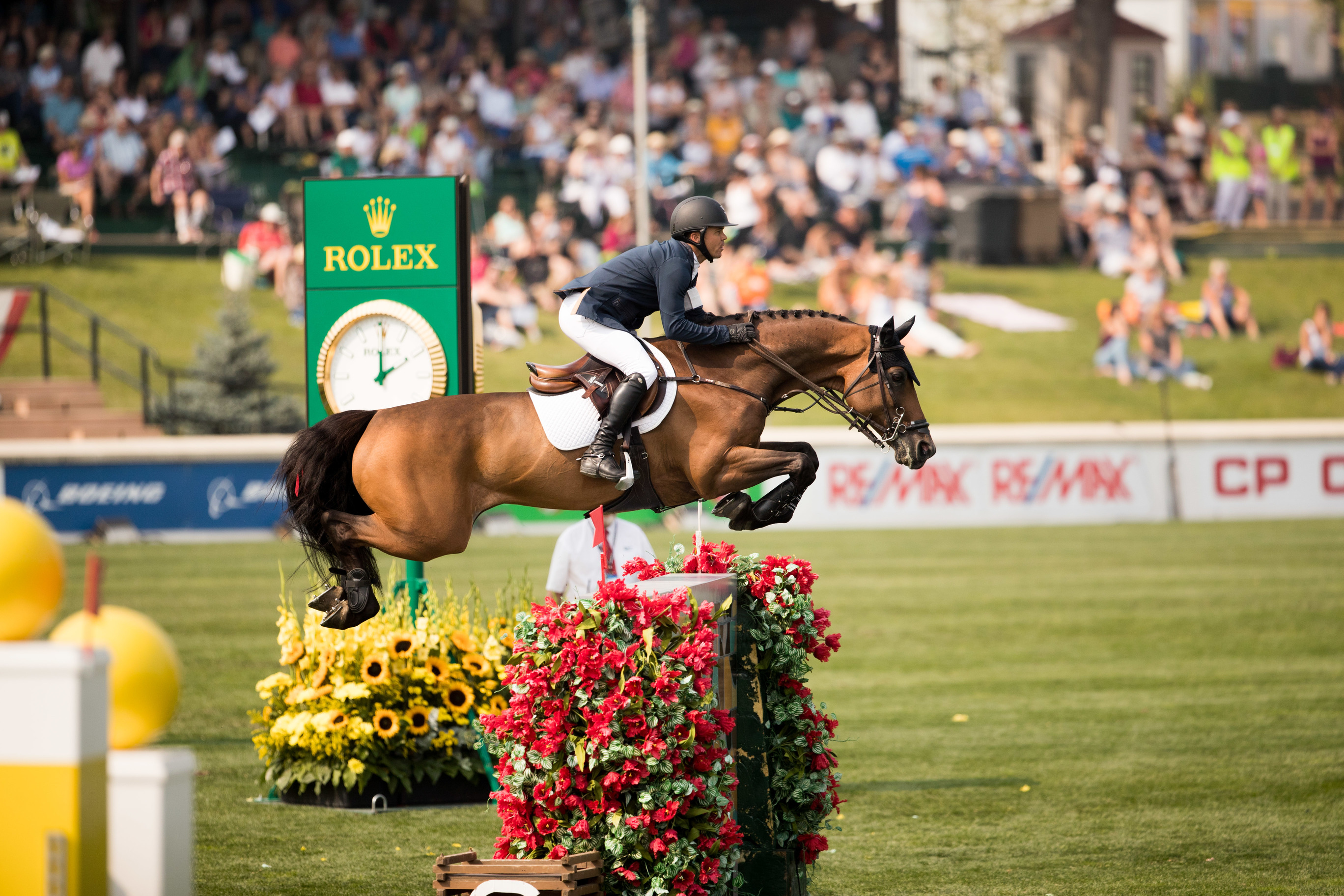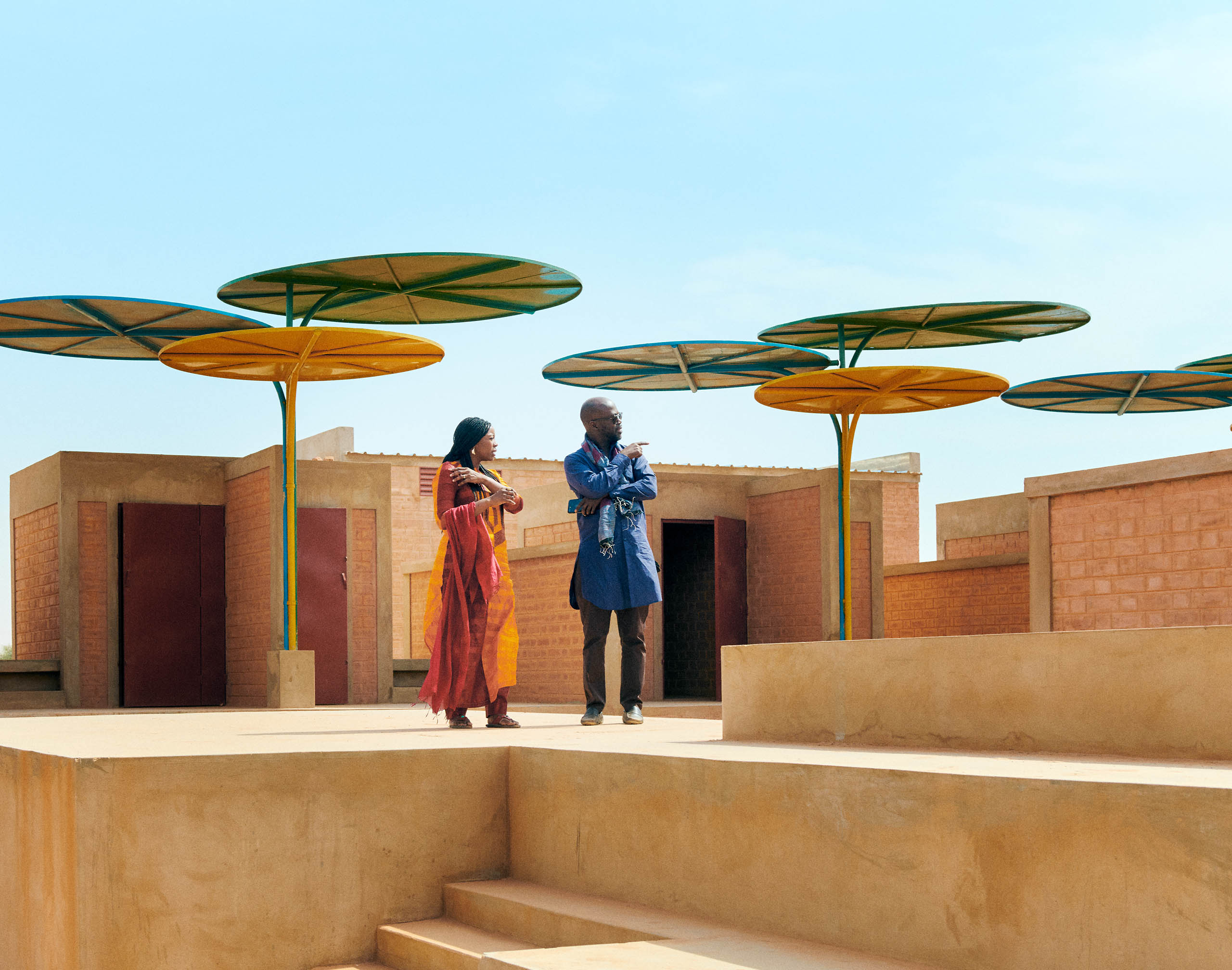-
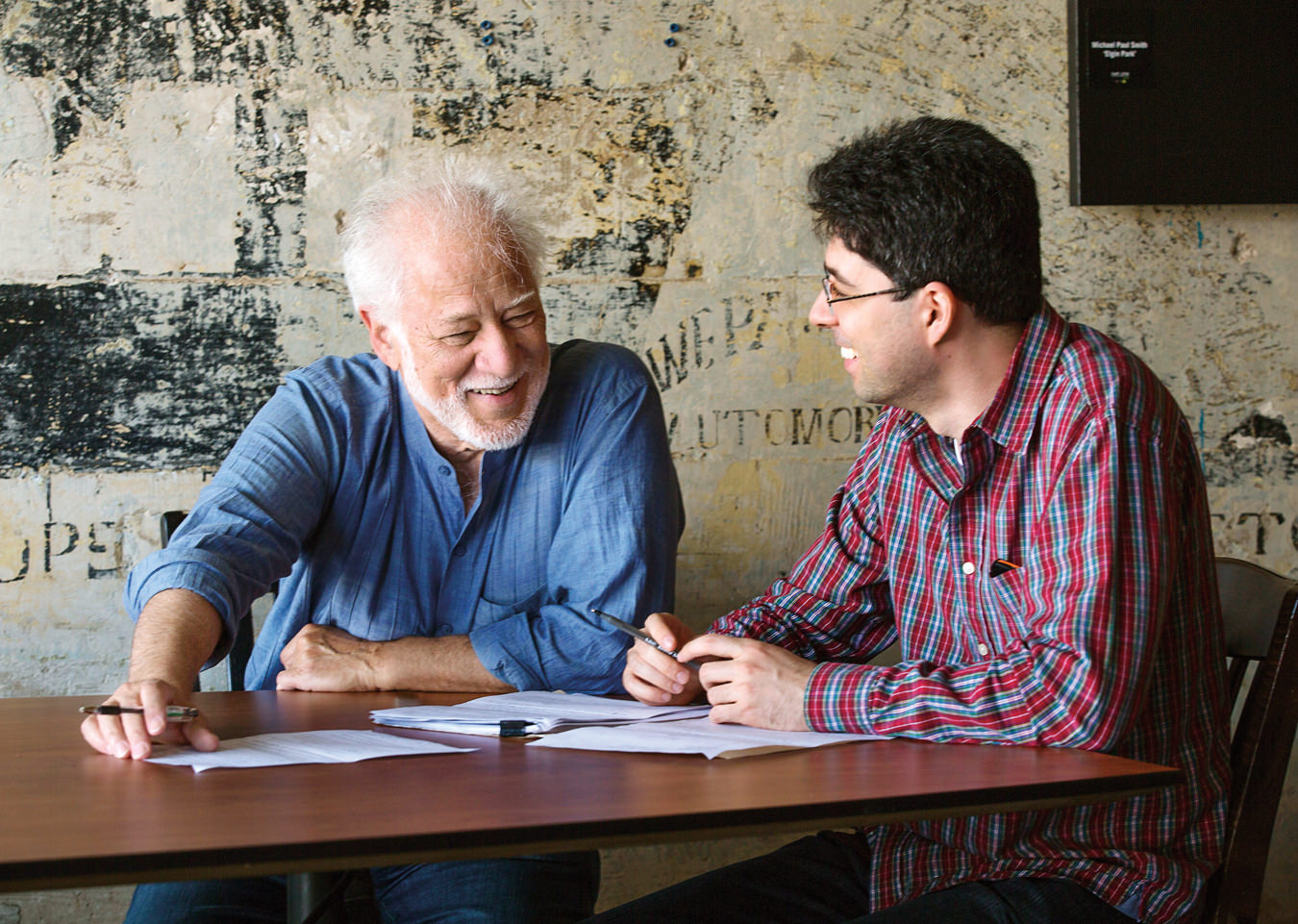
Writers Michael Ondaatje and Miroslav Penkov. Photo©Rolex/Bart Michiels.
-
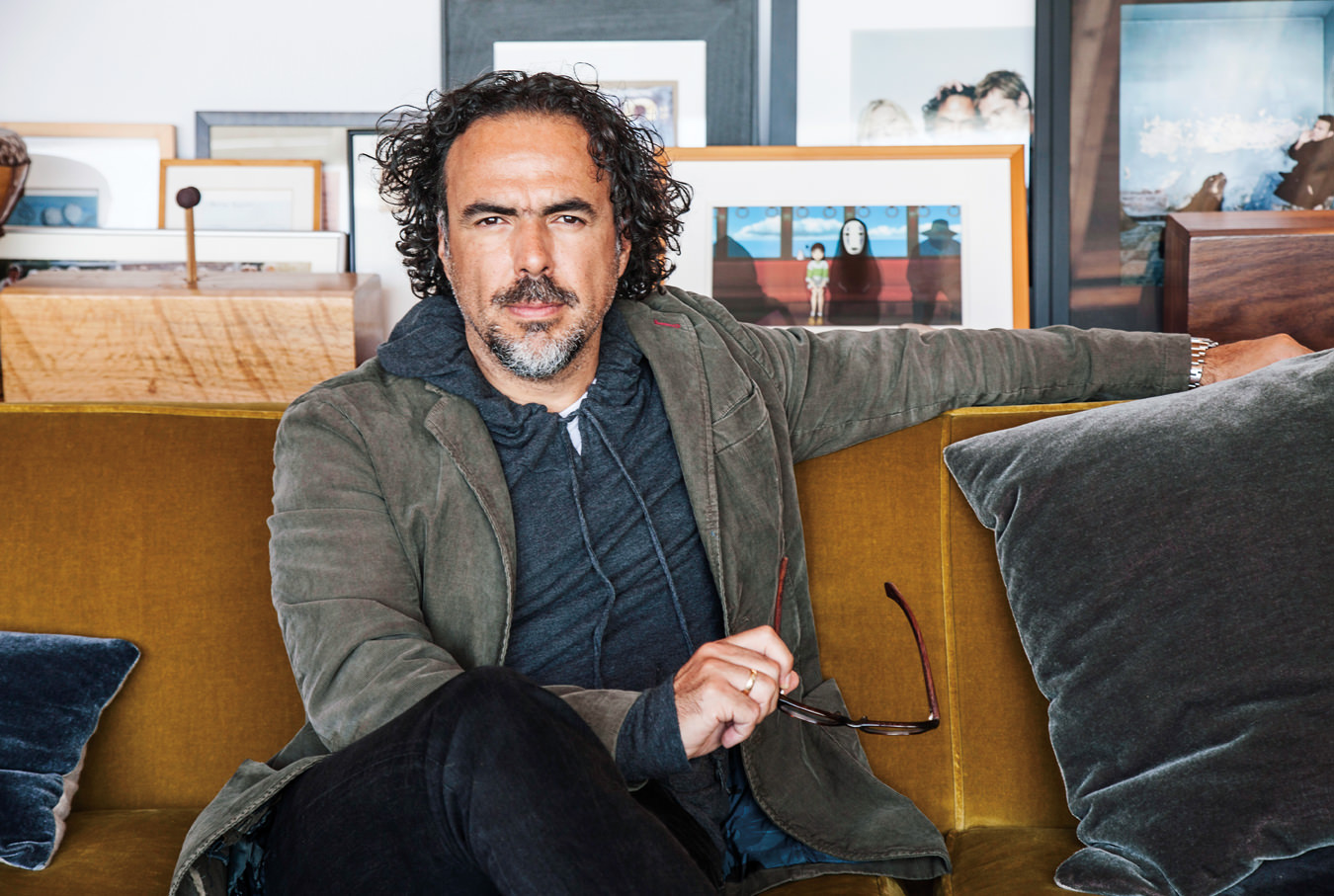
Filmmaker Alejandro González Iñárritu. Photo ©Rolex/Bart Michiels.
-
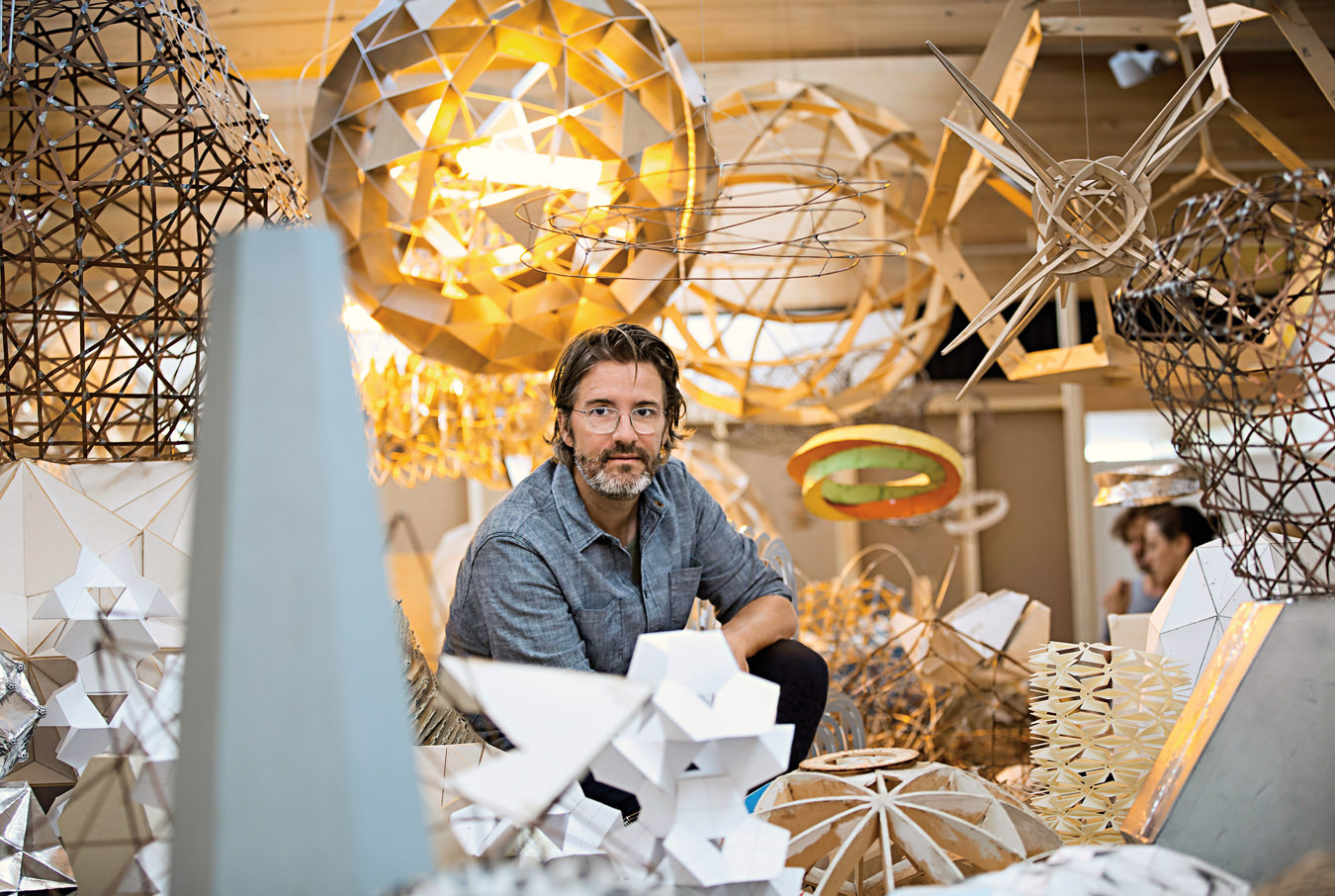
Artist Olafur Eliasson. Photo ©Rolex/Tomas Bertelsen.
-
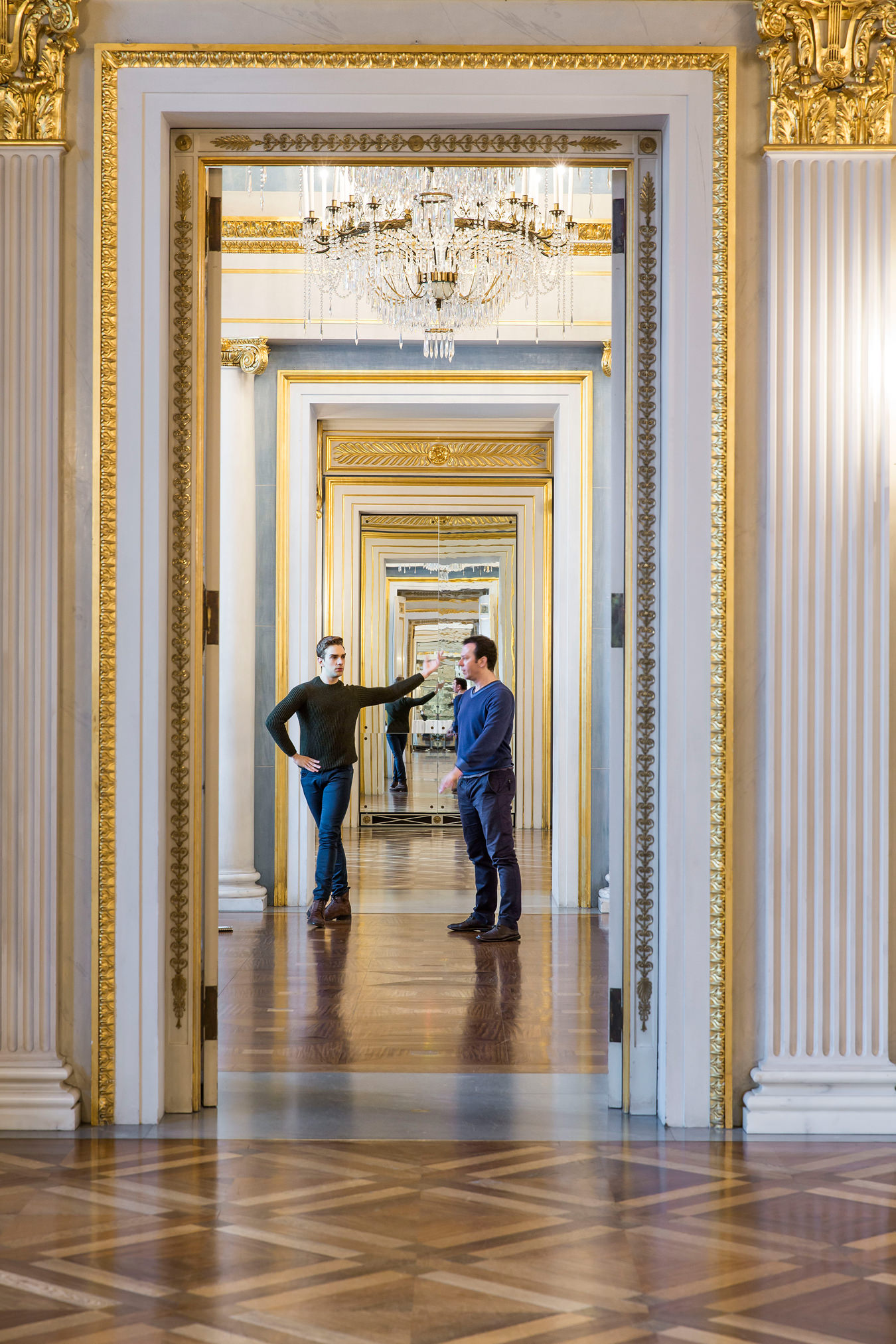
Mentor Alexei Ratmansky and protégé Myles Thatcher in the foyer of Munich’s Bavarian State Opera. Photo © Rolex/Hugo Glendinning.
-
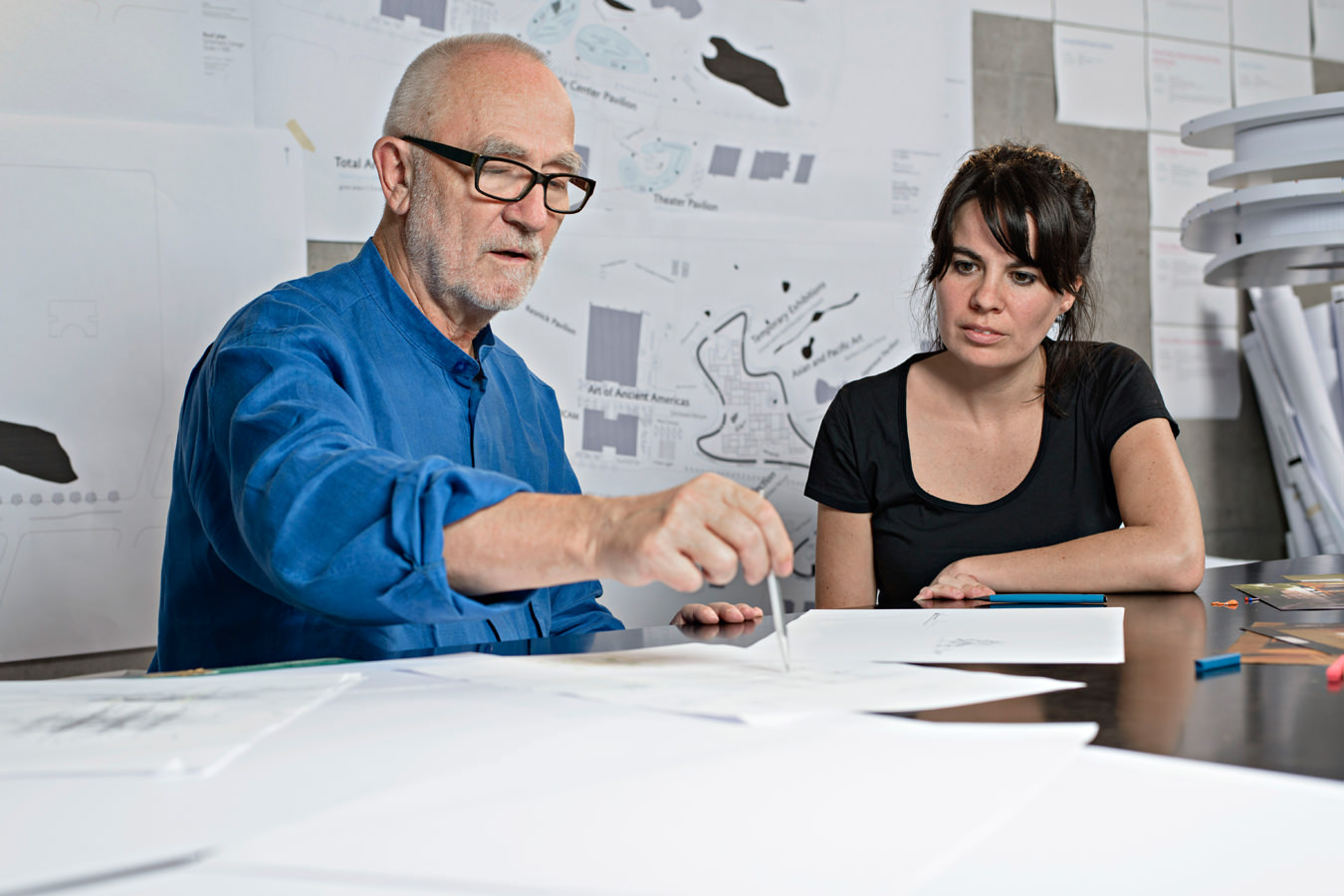
Protégée Gloria Cabral and mentor Peter Zumthor at work, in his studio in Haldenstein, preparing a design for the “tea chapel” in South Korea. Photo©Rolex/Marc Latzel.
-
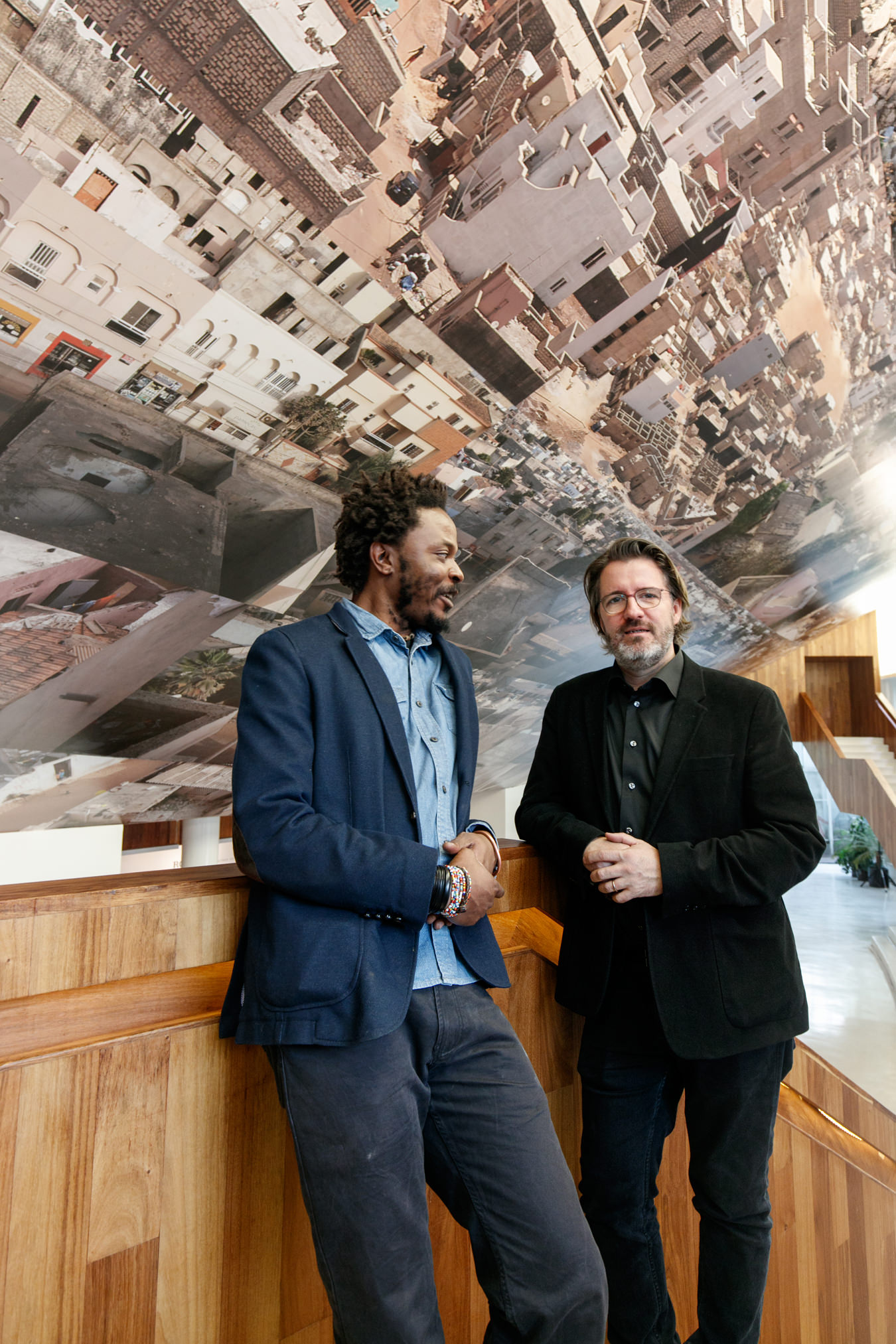
Congolese artist and photographer Sammy Baloji with his mentor Olafur Eliasson at his installation in the lobby of Teatro Julio Castillo. Photo ©Rolex/Bart Michiels
-
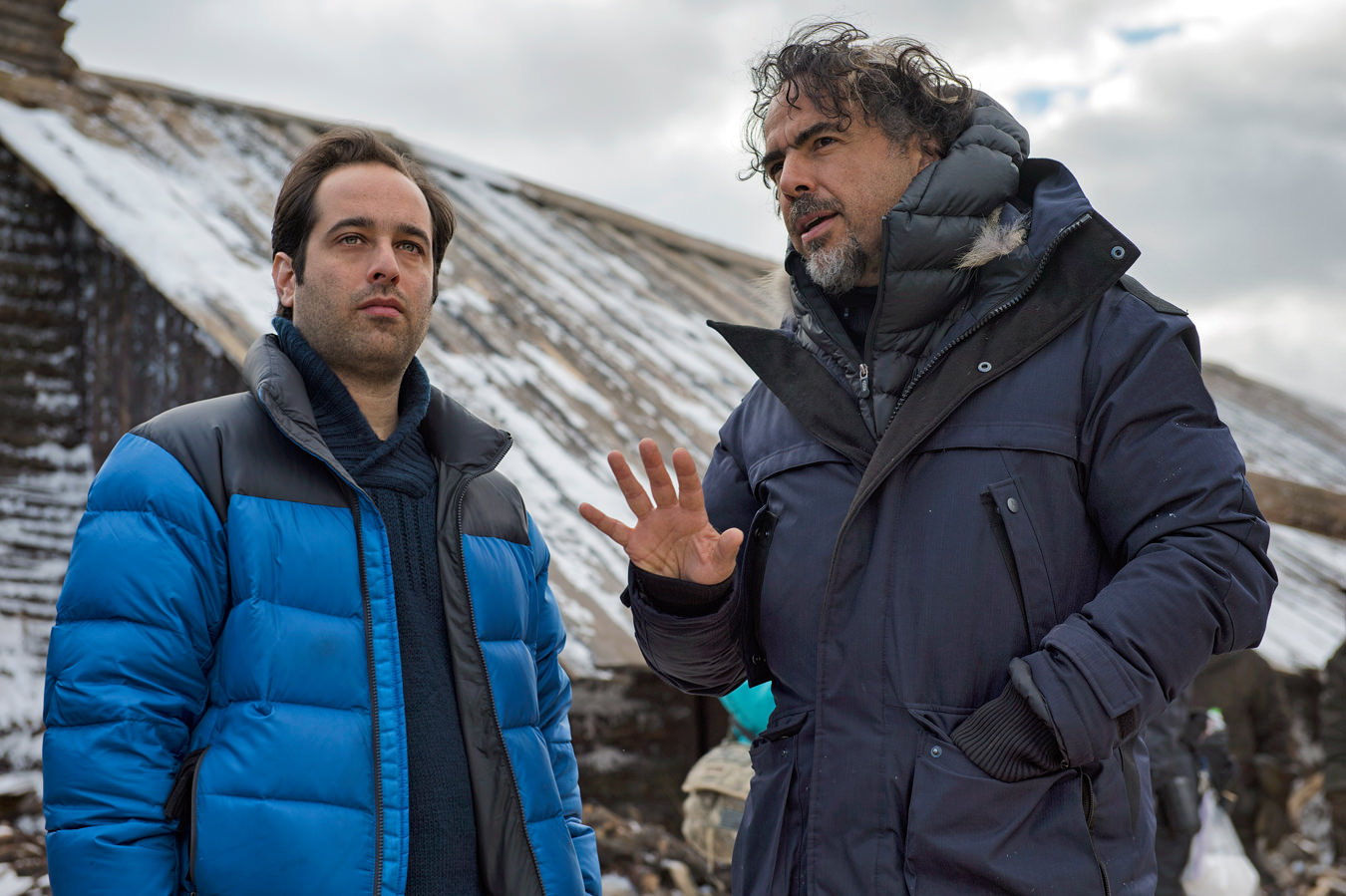
Mentor Alejandro González Inárritu and protégé Tom Shoval during the filming of “The Revenant” in Alberta, Canada. Photo©Rolex/Kimberley French.
A Year of Luminous Thinking
Mentors and protégés.
In a dimly lit theatre in Mexico City, Michael Ondaatje takes to the podium, adjusts his spectacles, and reads from his novel, Divisadero. Adjacent to the literary legend (best known for penning The English Patient) sits a lesser-known wordsmith, Miroslav Penkov, a 33-year-old Bulgarian novelist. The two are delivering a stylistic lecture at Teatro El Granero to an intimate group at the Rolex Arts Weekend, which serves as a finale for the watch company’s latest Mentor and Protégé Arts Initiative cycle. This talk also brings to an end a year spent by Penkov and Ondaatje delving into their shared craft. Ondaatje finishes a paragraph about a clockmaker when Penkov asks: “I’m curious, Michael, would you ever try your hand at a mystery?” Ondaatje pauses, deep in thought, before replying. “I think all my books are mysteries, actually.”
It’s a sentiment the 72-year-old writer hasn’t, it seems, considered before; a new revelation about his extensive body of work. Viewing and questioning one’s art through an alternate prism is exactly what Rolex’s philanthropic program encourages. “Mentor is a word I’ve tried to avoid all my life,” admits Ondaatje, “but whether the term teacher is better, I’m not sure. Mentor is more abstract, in a way. You’re not being taught mathematics or geography; you’re being shown another perspective.” Since 2002, the Rolex Mentor and Protégé Arts Initiative has continued this age-old tradition of shared discussion and tutelage, in a vein not too different from Plato’s influence in Aristotle’s life, Sidney Poitier’s mentorship of Denzel Washington, Rainer Maria Rilke’s Letters to a Young Poet, or even the fictional guidance Luke Skywalker received from Obi-Wan Kenobi in Star Wars.
With its biannual program, Rolex (the world’s richest timepiece company) has instituted a lofty, yet obvious, objective: to foster and pass on artistic heritage from generation to generation. An international advisory board of creatives and arts leaders recommends and endorses mentors in the fields of literature, dance, film, music, theatre, visual arts, and architecture, then world experts nominate young talents, who are invited to apply. Mentors hand-pick their protégés from a group of finalists, then spend a minimum of six weeks together over the course of a year to cement a professional camaraderie; the benefit flows both ways.
A list of past mentors reads like a Rolodex rife with the world’s most prestigious creatives: visual artists Anish Kapoor and David Hockney, musician Brian Eno, film director Martin Scorsese, theatre director Peter Sellars, film editor Walter Murch, and more. On this mentor panel, joining Canadian–Sri Lankan Ondaatje, there is Swiss architect Peter Zumthor, Russian choreographer Alexei Ratmansky, Mexican filmmaker Alejandro González Iñárritu, Finnish composer Kaija Saariaho, American theatre lighting artist Jennifer Tipton, and Danish-Icelandic conceptual artist Olafur Eliasson. These seven wonders of the world hold among them a prodigy’s bucket list of accolades: a Grammy Award, a Man Booker Prize, three Academy Awards, a Polar Music Prize, and a Prix Benois de la Danse. There is a Venice Biennale representative, a MacArthur Fellow, and a Pritzker Prize–winner. The tally, of course, goes on.
For Ondaatje and Penkov, the culturally resounding experience of immigration united them on common ground. Born in Bulgaria, Penkov moved to Texas at the age of 19. Ondaatje, born in Sri Lanka, made his way first to England and eventually settled in Toronto. Throughout the year, they spent time together in New York, Toronto, and Bulgaria, and Ondaatje gave valuable advice to Penkov that was incorporated into his latest novel, Stork Mountain (slated to be published in March by Farrar, Straus and Giroux).
“As the year progressed,” Penkov explains, “people would ask, ‘What are you learning?’ And I got really concerned because I couldn’t quantify it. But I also learned a quality that I do not possess and I am working on: patience. The truth is that writing novels is not a sprint, but a marathon. You have to enjoy the very difficult part of re-writing and polishing the manuscript, which normally a young writer will be miserable with. To take real joy from the physicality of it is something I will cherish for years.” Penkov, who didn’t speak English until the age of 14, recalls learning words from reading Ondaatje’s The English Patient. “I would underline them, then look them up in the dictionary. I persisted because it was the music of the sentences that I adored.”
Ondaatje, a self-taught linguist, elaborates on his craft. “I’m an obsessive editor, so I love taking away layer after unnecessary layer. To be a great writer you have to be a great listener, a great watcher. And I’m drawn to writers that are nothing like me. I’m influenced by admiring them.”
A newfound appreciation was in store for visual arts mentor Olafur Eliasson, as well. The renowned conceptual artist, known for his large-scale artworks—he recently placed 12 enormous chunks of glacier ice in front of Copenhagen’s city hall for a visceral, melting installation about climate change called Ice Watch—mentored Congolese-Belgian conceptual photographer Sammy Baloji.
“We know that culture is not an object,” reflects Eliasson. “It is a much bigger thing to tap into—a conversation, a process. So to spend time with somebody who was still working through verbalizing what he was doing, I found myself boring. I thought, how do I go back to not quite coming up with a language yet, and be fresh? Like Sammy.” The 37-year-old Baloji, who represented Belgium at last year’s Venice Biennale, unveiled Ouakam Fractals, a disjointed collage depicting aerial photos of a village in Senegal. Spanning 40 metres across the lobby ceiling of the Teatro Julio Castillo, the piece awed a craned-neck crowd and ignited a dialogue on post-colonial identity and African urbanization. “There is strength in doubting,” concludes Eliasson. “It is a strength I’d forgotten.”
Art is often seen as a search for explanations. Teaching is meant to give answers. Mentorship is a thing apart.
Finding courage was necessary for Academy Award–winning film mentor Alejandro González Iñárritu to accept Rolex’s invitation in the first place. “I was terrified,” confesses the director (of such films as Babel, 21 Grams, and Amores Perros). “I have never taught anything in my life. I don’t want to understand my process. If I understand, I will kill myself.” He pauses. “I want to be just navigating that river that takes me, sometimes, to the sea.”
Despite those fears, Iñárritu agreed to become a mentor, in large part, because of Rolex’s stance on philanthropy, which puts profits toward culture in a way most businesses do not. “To make a film sometimes can be very messy,” says Iñárritu. “I thought, ‘This will be very embarrassing, to show [Tom Shoval] my dirty laundry,’ but I still said ‘yes’.” Iñárritu selected his protégé, 34-year-old Shoval, after watching how the young Israeli director used personal stories and humanity in his films, “without explosions [and] with compassion.” The union began as dramatically as the course the mentorship would take: Shoval’s in-person interview with Iñárritu was on the Birdman film set in L.A. (“I walked onto a soundstage and Michael Keaton was flying around the room,” says Shoval.) When his mentor picked up three Oscars for that film, Shoval was there, attending the awards ceremony, having been nominated for his own short film, Aya. Next, Iñárritu swept his protégé up in his award-winning blockbuster, The Revenant, from pre-production to visiting the gruelling set in the frigid Canadian winter alongside A-list actors like Leonardo DiCaprio and Tom Hardy. “This was one of the more profound years of my life,” admits Shoval. “It was the best film school I ever had.”
Art is often seen as a search for explanations. Teaching, on the other hand, is meant to give answers. Mentorship is a thing apart. “The learning process is something you cannot quantify,” says Iñárritu, leading into a metaphor on the art of creative instruction: “The good lesson is pointing to the moon. And do not confuse the finger with the moon.”
Pritzker Prize–winning architect Peter Zumthor had many lessons to share with his protégé, 33-year-old Paraguayan Gloria Cabral. “I think back to all the houses I’ve ever lived in. This is the source of my work,” says Zumthor, who was recently commissioned to redesign the Los Angeles County Museum of Art into a 400,000-square-foot complex. The core of good design, stresses Zumthor, is instinct. “Answer first: do you like it? Then answer all the rest. It’s that experience of architecture before you know it exists. The idea of someone’s body knowing more than one’s brain. Gloria trusts her intuition.” During the mentorship he assigned Cabral to the design of a tea chapel in South Korea, so they travelled to Seoul, and went on to Asunción in Paraguay and Zumthor’s studio in Haldenstein, Switzerland. “We struggled with the language barrier,” admits Zumthor, “so we developed an intuition of the heart.”
The cycle’s youngest protégé was 25-year-old Myles Thatcher, a dancer and choreographer based in San Francisco. Paired up with one of the world’s most gifted contemporary masters of dance, Alexei Ratmansky, he found a bond in their shared view of ballet as an ever-evolving medium. Ratmansky and Thatcher met up in New York, Munich, and San Francisco to discuss and critique each other’s methodology. “It’s liberating to show someone your weaknesses,” says Ratmansky. “You open yourself to be observed.” When the curtain fell on Thatcher’s five ballets in Mexico City, his talent was on the lips of audience members for the rest of the day.
Lighting designer Jennifer Tipton—the mentor to light artist Sebastián Solórzano Rodríguez—credited her wisdom to her material. “I always say that light is the music for the eye, and light is a wonderful teacher,” says Tipton, an artist of few words and near-alchemic talents. During the course of their mentorship, Rodríguez joined Tipton in Barcelona, London, Paris, New York, Houston, and Madrid to witness her lighting up on-stage performances. Back at home in Mexico, Rodríguez’s final Arts Weekend project proved more artwork than theatre accompaniment: an interactive lighting installation through which viewers walk, a spectacle of luminosity and darkness. “Sebastián is an artist,” says Tipton. “And by osmosis I have gotten as much from him and his work. A lot of us, as artists, work alone. That is a lonely place. It is great to have a companion tell you what they really think.”
From the same artistic realms of light and dark came Kaija Saariaho and her protégé, Portugal’s Vasco Mendonça. The duo planned their year out as carefully as composing a symphony. Rather than watch each other pen musical notes, they attended performances together to fully immerse in the art form. Saariaho’s dark style of composition juxtaposes with Mendonça’s experimental sounds, but a mutual love of opera gave them a common ground.
Fewer technicalities, more intuition: therein lies the backbone of Rolex’s Mentor and Protégé Arts Initiative. The wrap-up event in Mexico City was a veritable buffet of food for thought, and it ended with the announcement of the 2016–2017 mentors—David Chipperfield, Mia Couto, Alfonso Cuarón, Philip Glass, Joan Jonas, Ohad Naharin, and Robert Lepage. The seven protégés will be revealed in June of this year.
“I have a photographer friend in Sri Lanka,” says Ondaatje, before stepping down from the Teatro El Granero podium. “Every six months he changes the lens of his camera, from that size to another size, so he can learn to see the world in a different visual way. I think that’s essential for an artist; you don’t make the same movie, you don’t write the same book. You want to discover all the variety within yourself.”





